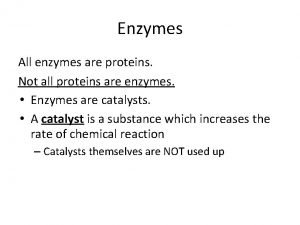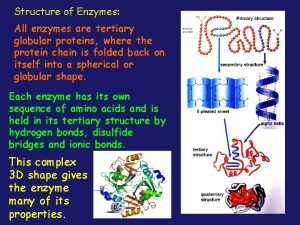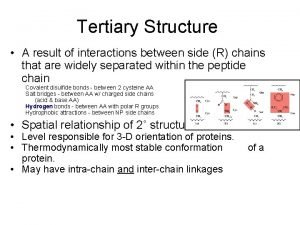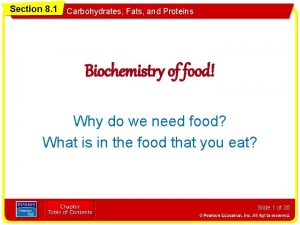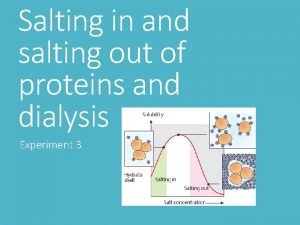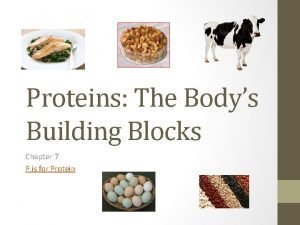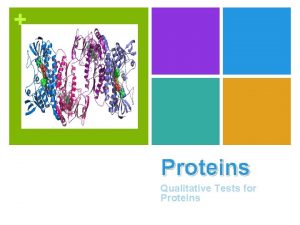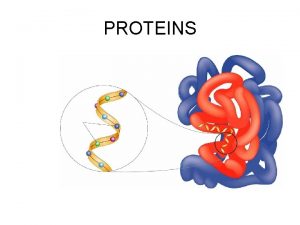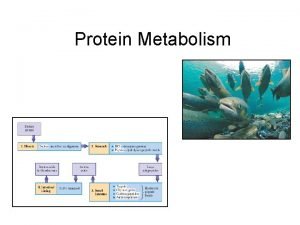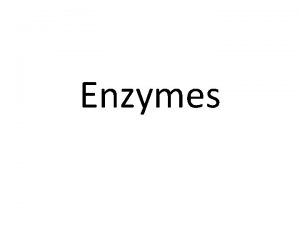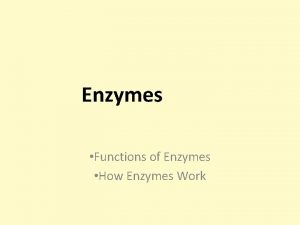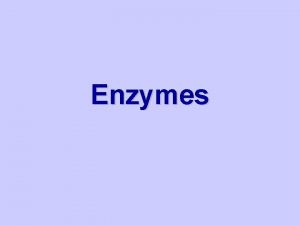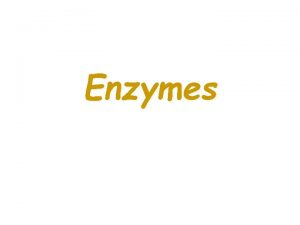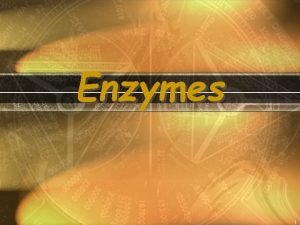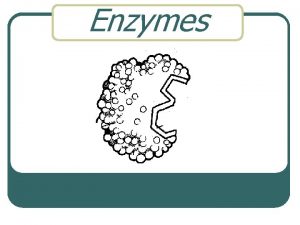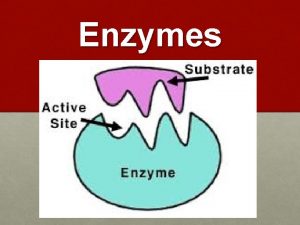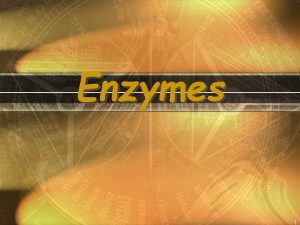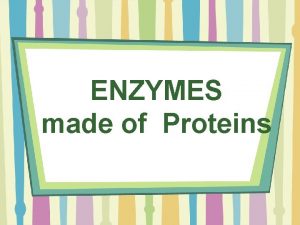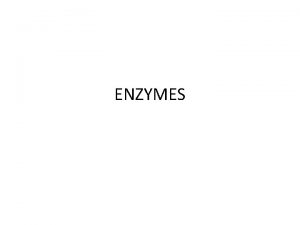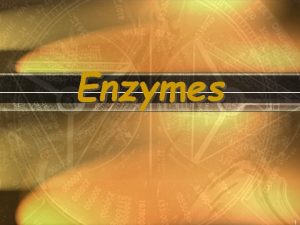Enzymes All enzymes are proteins Not all proteins















- Slides: 15

Enzymes All enzymes are proteins. Not all proteins are enzymes. • Enzymes are catalysts. • A catalyst is a substance which increases the rate of chemical reaction – Catalysts themselves are NOT used up

What are Enzymes used for? 1)Used in industrial processes to reduce heat or pressure requirements 2)Used in living organisms – Reactions must occur at body temp and atmospheric pressure (LOW) Why are enzymes important? • Without catalysts reactions would be too slow • Needed to sustain life

• Enzymes – Are a type of protein that acts as a catalyst, speeding up chemical reactions 1 Active site is available for a molecule of substrate, the reactant on which the enzyme acts. Substrate (sucrose) 2 Substrate binds to enzyme. Glucose OH Enzyme (sucrase) H 2 O Fructose H O 4 Products are released. Figure 5. 16 3 Substrate is converted to products. 3

How enzymes work • Enzymes act upon a substance called its substrate • Each reaction requires a specific enzyme • Enzymes must be made of something that can take many different shapes • Proteins and their 4 levels of structure work well • There is a small part of the enzyme that contacts the substrate called the active site – Like a small cleft or indent on the surface • Substrate fits into active site and interacts with exposed amino acids by ionic or hydrogen bonding – Forms enzyme-substrate complex – Reaction then occurs

How enzymes work • Proteins and their 4 levels of structure work well • There is a small part of the enzyme that contacts the substrate called the active site – Like a small cleft or indent on the surface • Substrate fits into active site and interacts with exposed amino acids by ionic or hydrogen bonding – Forms enzyme-substrate complex – Reaction then occurs

How enzymes work • All reactions begin by breaking bonds which requires an activation energy to start • Enzymes work by lowering the activation energy – This is done by the enzyme-substrate complex – This complex has lower activation energy – Makes the reaction proceed quicker and easier • Without enzyme activation is too high to occur

Factors that affect How Enzymes Work 1)Temperature – Increase temperature --> Increase kinetic energy or movement of molecules – More collisions between substrate and enzyme – Moving higher than optimum temp reduces activity • Enzyme is made of protein • High temperatures can denature the enzyme – Tertiary structure is changed – 3 D structure of enzyme changes too much for substrate to fit – Most enzymes in the human body have an optimum temperature around 40 C

Enzyme Activity Factors 2) p. H – A change of p. H means a change in H+ ions in the surrounding – Affects the bonding of R-groups – Affects the shape of the enzyme – Most human enzymes have optimum at 7 (neutral) – Stomach enzymes (pepsin) have optimum at 2 – Liver enzymes arginase has optimum at 10

Enzyme Activity Factors 3) Enzyme concentration – Enzymes are not used up during reactions – Can work effectively at low concentrations – Usually substrate molecules are in excess – Reaction rate is limited by enzyme concentration – Increased concentration --> increased reaction rate

Enzyme Activity Factors 4) Substrate concentration – If substrate concentration is low some enzyme sites empty – Rate of reaction will be lower – If substrate conc. is then increased --> rate increases – This increase continues until substrate is in excess

Energy Changes

Temperature

p. H

Enzyme Concentration

Substrate Concentration
 Not all enzymes are proteins
Not all enzymes are proteins Mikael ferm
Mikael ferm All enzymes are globular proteins
All enzymes are globular proteins Sadlier unit 1 level d synonyms
Sadlier unit 1 level d synonyms Love is not all it is not meat nor drink
Love is not all it is not meat nor drink Name a line containing point a
Name a line containing point a Carrier vs channel proteins
Carrier vs channel proteins Globular vs fibrous proteins
Globular vs fibrous proteins Section 8-1 carbohydrates fats and proteins answer key
Section 8-1 carbohydrates fats and proteins answer key Salting in and salting out of proteins
Salting in and salting out of proteins Building blocks of protein
Building blocks of protein Example of denatured protein
Example of denatured protein Globular proteins examples
Globular proteins examples Monomers protein
Monomers protein Tertiary protein structure
Tertiary protein structure Transdeamination of amino acids
Transdeamination of amino acids
